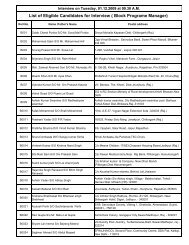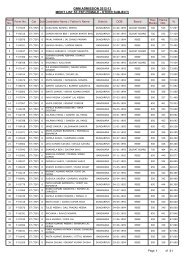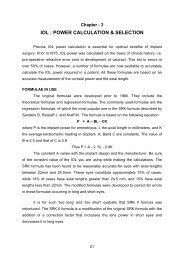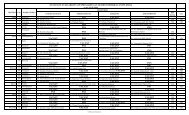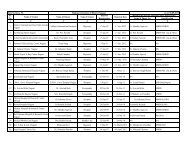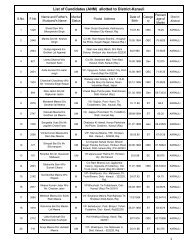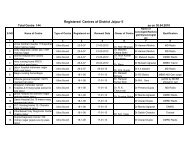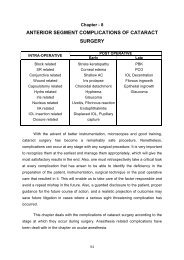THE LENS - APPLIED ANATOMY AND EMBRYOLOGY
THE LENS - APPLIED ANATOMY AND EMBRYOLOGY
THE LENS - APPLIED ANATOMY AND EMBRYOLOGY
Create successful ePaper yourself
Turn your PDF publications into a flip-book with our unique Google optimized e-Paper software.
Structure<br />
The lens consists of:<br />
1. The lens capsule<br />
2. The lens epithelium and<br />
3. The lens cells or fibers<br />
The characteristics of the lens capsule<br />
The capsule completely envelops the lens and the cells of origin are<br />
completely contained in it. The<br />
capsule is the basement<br />
membrane of the lens epithelium<br />
and is the thickest basement<br />
membrane of the body. It is much<br />
thicker in front than behind and the<br />
capsular bag<br />
anterior and posterior portions are thicker towards the periphery (equator) just within<br />
the attachment of the suspensory ligament than at the poles. The thickness at the<br />
posterior pole is 2.8- 4 µm and at anterior pole is 15.5 µm. Capsule thickness<br />
increases anteriorly with age but there is little change at the posterior pole. Under the<br />
light microscope the capsule appears transparent, homogenous and under polarized<br />
light, birefringent with an indication of a lamellar structure with fibers arranged<br />
parallel to its surface. Under electron microscope, the capsule appears to have a<br />
relatively amorphous appearance. There are upto 40 lamellae, each of which is<br />
40mm thick.<br />
The lens epithelium<br />
The lens epithelium consists of a single sheet of cuboidal cells spread over<br />
the front of the lens, deep to the capsule and extending outwards to the equator.<br />
There are about 500,000 cells in the mature lens. There is no corresponding<br />
posterior layer because the posterior epithelium of the embryogenic lens is involved<br />
in the formation of the primary lens fibers which occupy the centre of the lens<br />
nucleus.<br />
There are 3 zones in the lens epithelium. The central zone represents a stable<br />
population of cells. The intermediate zone is peripheral to the central zone and its<br />
cells are smaller. The germinative zone is the most peripheral and is located just preequatorially.<br />
5



